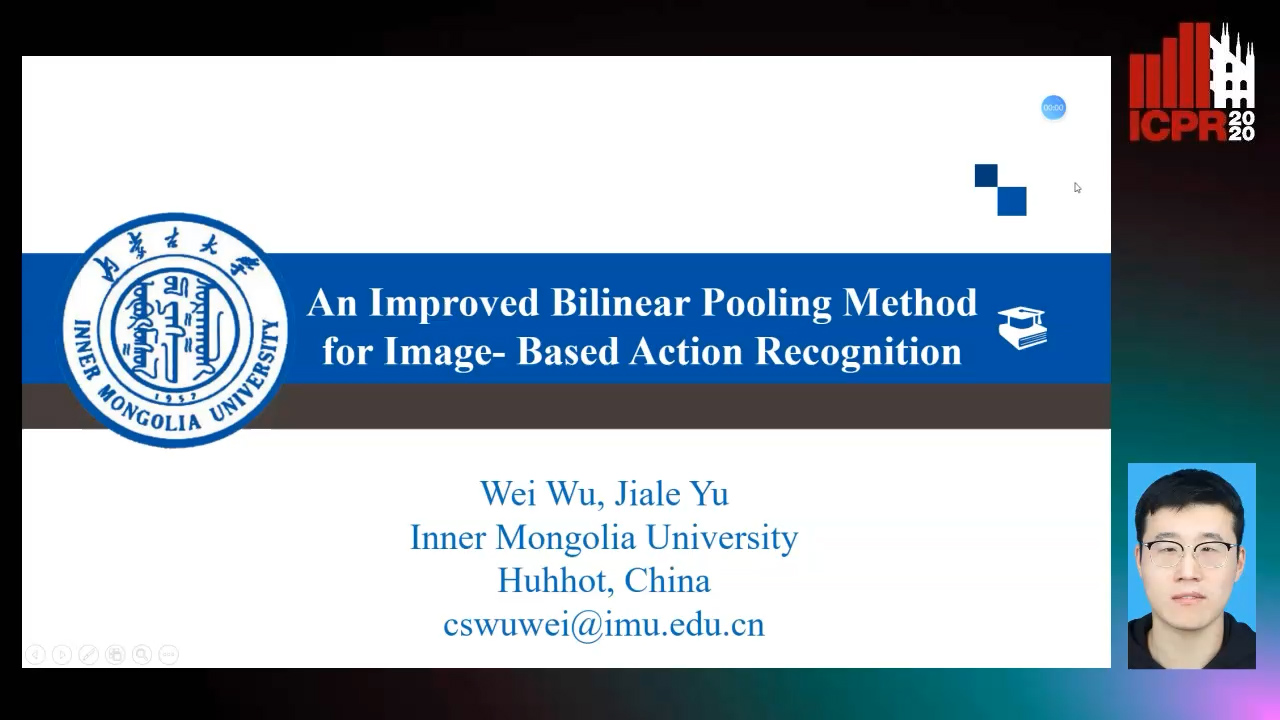Wei Wu
Paper download is intended for registered attendees only, and is
subjected to the IEEE Copyright Policy. Any other use is strongly forbidden.
Papers from this author
An Improved Bilinear Pooling Method for Image-Based Action Recognition

Auto-TLDR; An improved bilinear pooling method for image-based action recognition
Abstract Slides Poster Similar
Action recognition in still images is a challenging task because of the complexity of human motions and the variance of background in the same action category. And some actions typically occur in fine-grained categories, with little visual differences between these categories. So extracting discriminative features or modeling various semantic parts is essential for image-based action recognition. Many methods apply expensive manual annotations to learn discriminative parts information for action recognition, which may severely discourage potential applications in real life. In recent years, bilinear pooling method has shown its effectiveness for image classification due to its learning distinctive features automatically. Inspired by this model, in this paper, an improved bilinear pooling method is proposed for avoiding the shortcomings of traditional bilinear pooling methods. The previous bilinear pooling approaches contain lots of noisy background or harmful feature information, which limit their application for action recognition. In our method, the attention mechanism is introduced into hierarchical bilinear pooling framework with mask aggregation for action recognition. The proposed model can generate the distinctive and ROI-aware feature information by combining multiple attention mask maps from the channel and spatial-wise attention features. To be more specific, our method makes the network to better pay attention to discriminative region of the vital objects in an image. We verify our model on the two challenging datasets: 1) Stanford 40 action dataset and 2) our action dataset that includes 60 categories. Experimental results demonstrate the effectiveness of our approach, which is superior to the traditional and state-of-the-art methods.